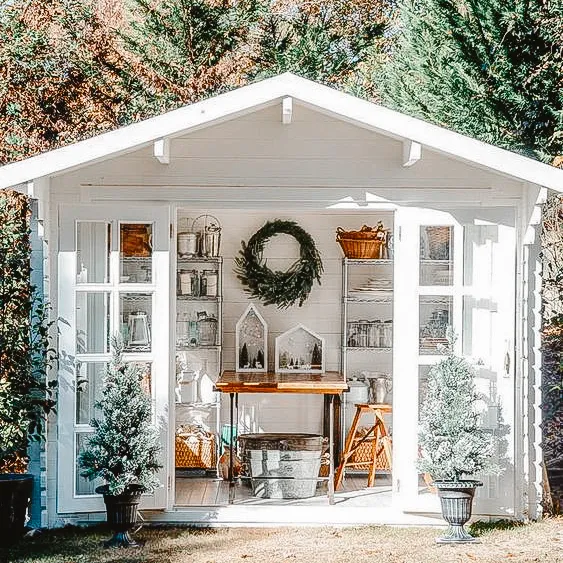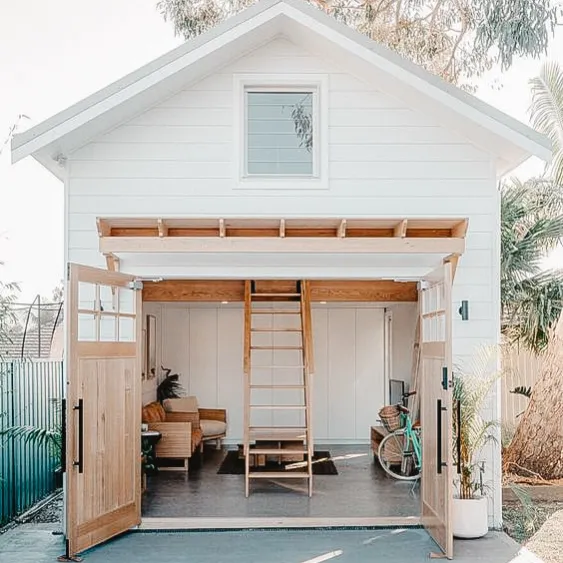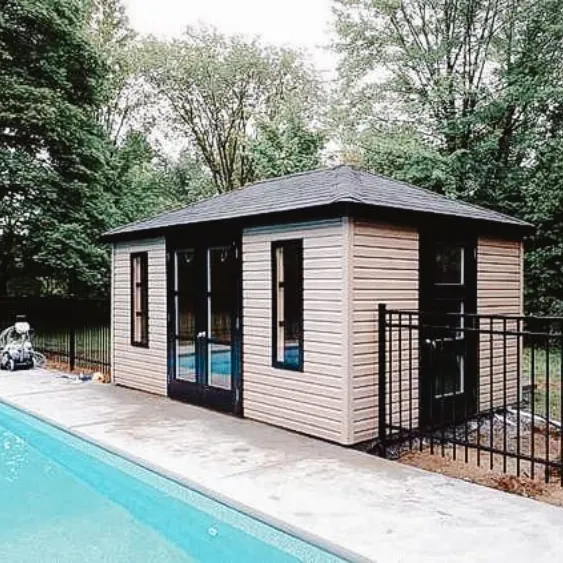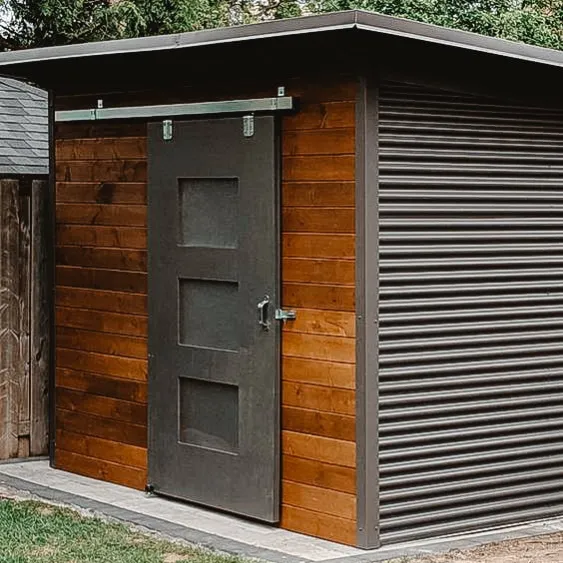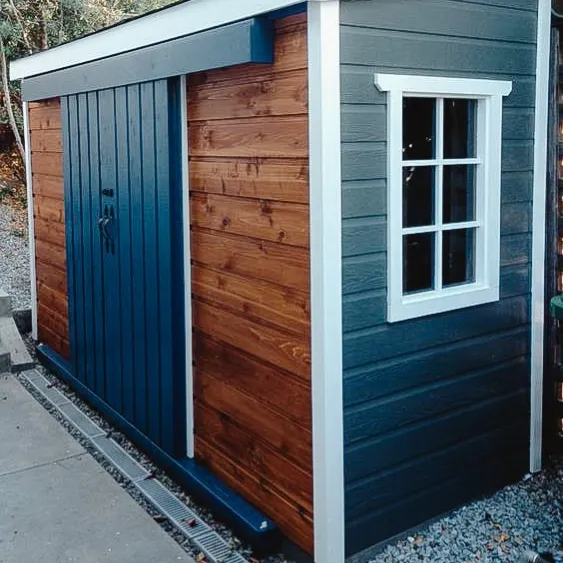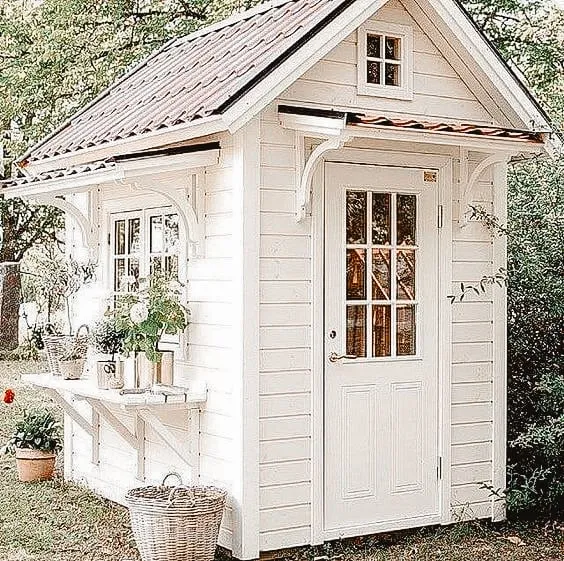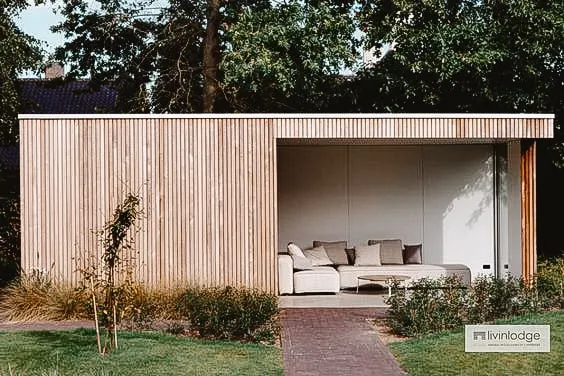Shed – Garden house
The Perfect-Sized Shed: Planning for Optimal Storage and Functionality
Whether you have a garage or not, you probably need a shed. Some are tiny and contain only garden essentials such as shovels, rakes, and lawnmowers, while others store sporting equipment, patio furniture, snowblowers, tools and so much more. There are several types of sheds, so let us go through them together so you choose which one best suits your needs.
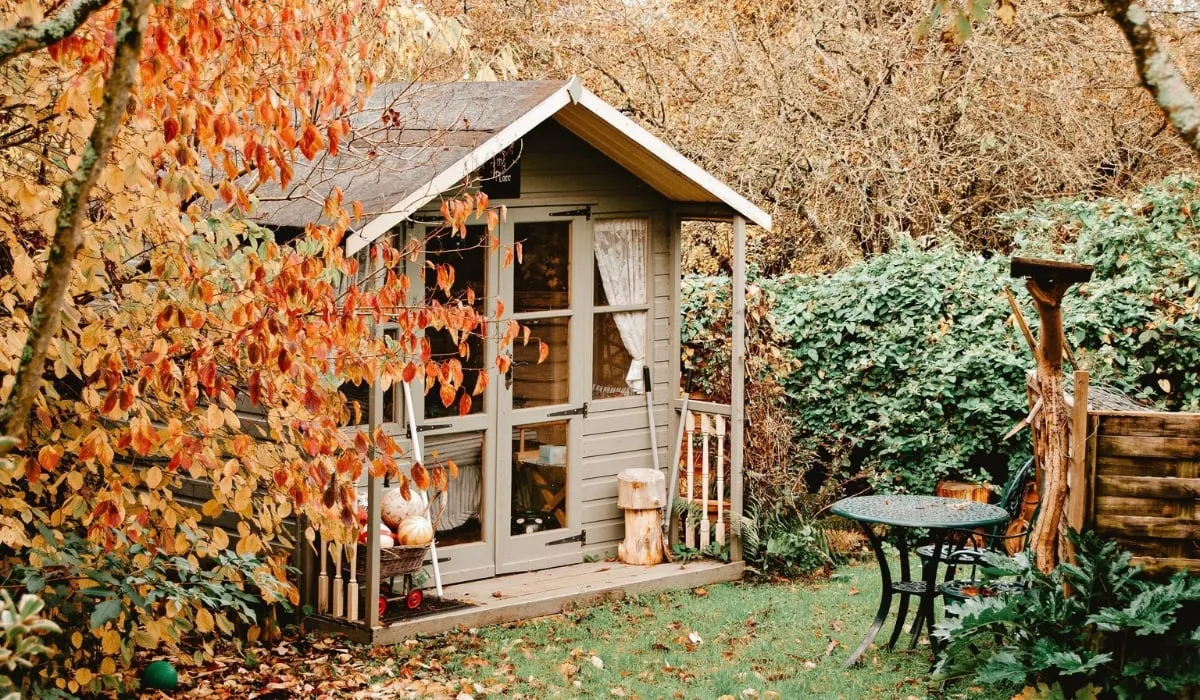
Choosing the Right Dimensions for Your Needs
Building a shed is a fantastic way to add valuable storage space to your property. But before you grab your hammer, it’s crucial to determine the ideal dimensions for your needs. Here’s a guide to help you find the perfect balance between maximizing storage capacity and avoiding a shed that overpowers your yard.
Start with a Detailed Inventory
The first step is to create a comprehensive list of everything you plan to store in your shed. Prioritize bulky items like lawnmowers, snowblowers, bicycles, kayaks, or other recreational equipment. These typically require a wider door (around 1.5 meters) and ample storage space. For these items, consider a minimum shed size of 3 meters by 3.7 meters.
Visualize and Optimize Your Space
To get a clearer picture of your shed’s layout, use string or rope to mark the desired dimensions on the ground. Arrange your intended stored items within the marked area. Remember, you’ll need room to maneuver around your belongings for easy access. A strategically placed door in the center of the longest side is ideal for this purpose.
Maximize Storage with Smart Solutions
Don’t underestimate the power of shelves and hooks! Utilizing vertical space allows you to store more items without sacrificing floor space. Check out our blog post on “https://www.extraspace.com/blog/home-organization/outdoor-shed-organization-storage-ideas/” for additional space-saving ideas.
Considering Construction Options
Building Your Dream Shed
Building your shed from scratch offers complete customization and cost savings. However, keep in mind the time and effort involved in construction.
Prefabricated Perfection
Prefabricated sheds come in various sizes and styles, offering a quicker and more straightforward solution. Some companies even provide customization options.
Ready-to-Use Convenience
For ultimate convenience, pre-assembled sheds are delivered ready for immediate use. While customization is limited, they offer a fast and hassle-free way to gain storage space.
Choosing the Right Foundation
Strength and Stability with Screw Piles
As your shed size and weight capacity increase, so too does the importance of a solid foundation. Opt for screw piles, also known as helical anchors, for superior strength and durability. These piles are installed below the frost line for long-lasting stability, ensuring your shed remains secure for years to come.
Before You Build, Check the Rules
Before construction begins, consult your local municipality to ensure your shed complies with all relevant regulations. These regulations often cover aspects like placement on your property, proximity to property lines, and maximum shed size allowances.
Before you begin, check with your municipality regarding shed regulations for your area.
The challenges are the location in which you will be entitled in relation to the dimensions and limits of your property, as well the maximum size of the shed.

